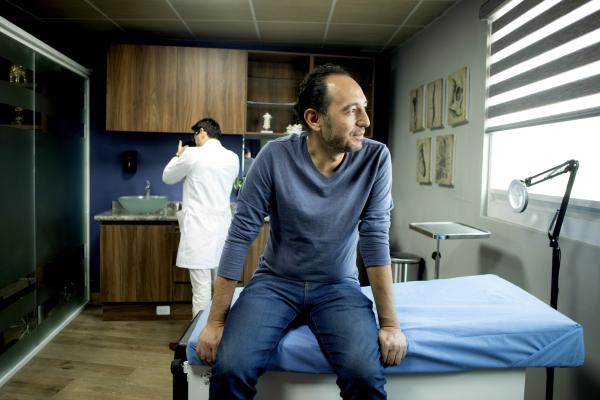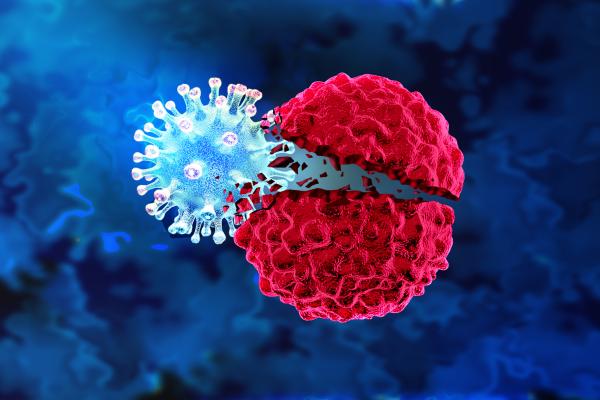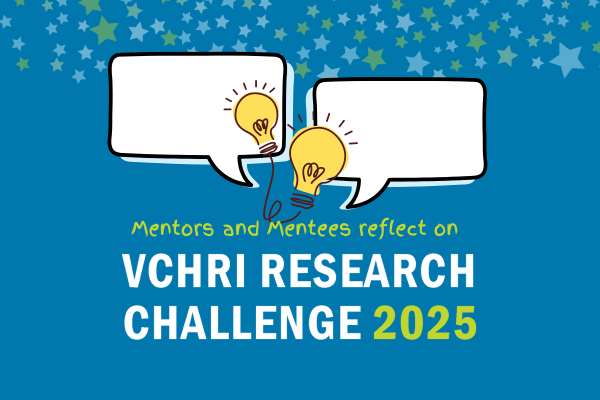
Understanding circular RNA expands knowledge of prostate cancer and potential therapeutics.
Scientific research into the double- and single-helix linear structures of DNA and RNA has revealed a mystery in the form of circular RNA (circRNA). As interest grows in these strands of RNA that are continuous loop shapes, a new computational tool called CircMiner, developed by Vancouver Coastal Health Research Institute scientist Dr. Faraz Hach and his team at the Vancouver Prostate Centre (VPC), is helping researchers identify circRNA and better understand their role in conditions like prostate cancer.
“Circular RNA was not a familiar concept even just a couple of years ago,” explains Hach, who has a background in computing sciences and genomics and is a senior research scientist at the VPC. “Accurate and rapid detection of circRNAs from short-read sequencing technologies, also known as high throughput sequencing technologies, has been computationally challenging.”
“Recently, it has been shown that circRNAs can modulate or relay the gene expression in other genes, and in some cancers they can act as oncogenes or a tumour suppressor. That’s why we got into this research and started developing CircMiner.”
CircMiner identifies signals of RNA circularization, known as back-splice junctions, at ultra-high speed. Since most RNA molecules in cells are from linear RNA isoforms and are therefore irrelevant to circRNA detection, CircMiner introduces a fast algorithm to filter out reads from these linear RNAs, resulting in high performance.

“Our goal was to develop a computational methodology to accurately mine information about circRNA from the genetic data. Complimenting these analyses with [wet] lab research can facilitate studying their roles in prostate cancer or other diseases.”
At the VPC, we are working with digital data derived from patients’ tumours. The results can be passed on to our clinicians and potentially used for decision-making about patient care.
Currently, no other computational tool or method exists that parallels CircMiner’s accuracy and speed.
“There is a tool that does the same type of data mining with really good accuracy and sensitivity, but it takes a very long time to run,” Hach says. “CircMiner is 30 times faster, meaning we can look at an entire cohort in less than a day. In addition to that, our accuracy is high.”
But speed is just the icing on the cake, Hach explains.
“You can write a tool that works fast but you don’t want speed at the cost of sensitivity because more accurate medical information is what we want,” he adds. “The fact that we can do this both quickly and with a high level of sensitivity is excellent.”
“I want to give all the credit to my trainees who work tirelessly on this project; it’s a team effort and we were really happy with the end result,” says Hach. “The long-term vision for our work is that biology is going to be digitalized. Luckily, the VPC was an early adopter and very open to this avenue of research.”
Making CircMiner’s capabilities freely available
Hach shares that he and his team are trying to make the tools they develop as available as possible in the general domain.
“Our source code is freely available on our GitHub page and we’re also making it available through package manager, which is mainly used by researchers and labs that do not have a lot of expertise in computational methods.”
We wanted to make CircMiner user friendly. It is easy to install and use, and it has a very simple interface to work with.
In the two months since its release, other health researchers have started using CircMiner for their own health cohorts, which will likely lead to more published research about circRNA.
“I think the next step in this field of study would be to use less invasive biopsy methods to find these circular RNAs,” Hach says. “Instead of performing a potentially painful biopsy procedure to find and look at circular RNA, a simple blood draw may let us extract such genetic information from dead or dying cells circulating in the blood and gives us idea of what’s happening in the patient’s body.”


